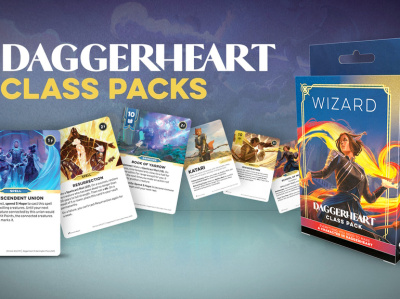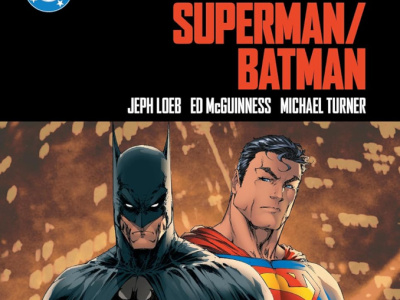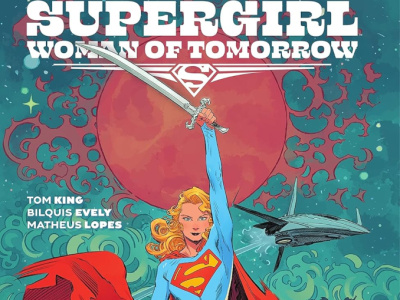 We recently caught up with IDW CEO Ted Adams for a chat about the state of the market, IDW’s line, and the digital market for comics. In Part 3, we talk about the market for digital comics and IDW's digital initiatives. In Part 1, we talked about the state of the comic and graphic novel markets and IDW’s place in them. In Part 2, we talked about IDW’s diverse line.
We recently caught up with IDW CEO Ted Adams for a chat about the state of the market, IDW’s line, and the digital market for comics. In Part 3, we talk about the market for digital comics and IDW's digital initiatives. In Part 1, we talked about the state of the comic and graphic novel markets and IDW’s place in them. In Part 2, we talked about IDW’s diverse line.Let’s talk a little bit about what you’ve been doing with digital. One of the high water marks for digital comics in 2009 was IDW’s announcement that you’d sold more or a similar number of Star Trek Countdown digitally than you did of the paper version and felt that it had no negative impact on the paper sales. Where is IDW with digital comics and where do you see things headed?
At this point there are two primary markets for digital comics: there are iTune apps, and we continue to be unbelievably aggressive in that space. One of the nice things about iTunes is there’s an app to track your iTune app sales, which is kind of funny but it’s a very useful tool. I actually know every single day how many apps we sold on iTunes. I can look at a specific app and I can look at our business in total. On a daily basis I know exactly how much we sold the day before. We have continued to see increases in sales almost on a daily basis. If you look at our trends, and this app actually does a nice job of graphing out trends, it’s the sort of trend that you love to see. It’s a line that’s shooting up. Every day and every week we’re selling more than the day before and the week before. So iTunes apps continues to be a great thing for us. We will continue to be aggressive in that space.
The second market is the Sony PSP; that launched in mid-December. I don’t have as good sales data because they don’t have the same kind of tracking that Apple does. We’ve seen really strong sales there. They also do what they essentially call their Top Ten or Top Twenty. IDW just dominates that list. At any given time we’ll have seven out of the top ten top-selling PSP comics and that’s beating Marvel’s library and all the other comics that are available through the PSP. It’s been just a terrific platform for us to sell comics.
Who’s buying comics digitally?
I think it depends on the market. The PSP market is clearly a gamer. The device itself is designed in large measure just to play games. I think you’re talking about probably an audience that’s male, mid-to-late teens would be my guess. Sony has a lot of interesting demographic information although it doesn’t filter down all the way to who’s buying the comics. The PSP is a device that’s not just U.S.-based. We’re seeing some nice sales not just in the U.S. but also in the U.K. and Europe.
When you talk about the iPhone, I think it’s probably a little broader as far as the demographic goes.
People who are buying these apps and PSP comics are not the people who were going to buy the print comics. I feel like we’re reaching a different audience here. I was telling you about the list of the top ten PSP comics; at any given time we’ll have seven out of dthose top ten. They’re not the comics you’d necessarily expect. There are usually one or two Transformers comics in that top ten but you also see things like Ben Templesmith’s Wormwood; you’ll see Steve Niles’ Aleister Arcane; you’ll see Joe Hill and Gabriel Rodriguez’ Locke and Key, so you really see our creator-driven books having a really strong presence on the PSP top ten, dominating that chart in a way that they would simply never dominate if you look at a Diamond Top 300 chart.
How do those customers find out about the creator titles?
There are a couple of ways. The PSP actually has a store within the device itself so there’s marketing that you can do within the PSP store. There’s essentially a comic store inside the PSP. You can market inside of there with banner ads and other things. Then there’s also the creators. In large measure creators can drive people from their social media sites, whether they’re having to Twitter about it or they’re doing things on their blog or their own Website causing people to go to those sites. There are a variety of ways to build a market. That’s the really exciting thing about both Apple and Sony is that the marketing has been mostly grass roots at this point. If we can convince those big organizations that this is content that’s worth it for them to promote, the sky really is the limit as far as the number of people we can potentially reach.
Do you think piracy’s having an impact on comic sales?
I don’t know. I like to believe that most people at their core are good. I hope that most people recognize that if they read pirated comics they are flat out stealing from creators and publishers. There is no gray area here. It’s flat-out thievery and I hope that most people at their core are good and would choose not to do that. I have no way to be able to say, ‘Because there was a bit-torrent file of this latest issue of Locke and Key that we lost X number of sales.’ I wouldn’t know how to put a number on that.
What are your impressions of the iPad?
I think the iPad without any question is going to be impactful for all of us. There’s a misunderstanding of what the iPad’s going to be, at least in the early days. You’re going to be able to read your iTune apps on your iPad. So all of your IDW iTune apps will be readable on the iPad on day one. We’re going to have a lot of content that’s available literally when the device is released. The bigger opportunity is going to be able to sell content through iBooks which will be the new store within iTunes.
It’s a venue for digital books, right?
Right, that’s the real opportunity. Once iBooks is up and running, once we’re able to get comic book content into that section, that’s what’s really going to change things. Even with as much success as we’ve had with our iTunes apps, it’s really hard to merchandise those apps. There are over 100,000 apps available on iTunes. Trying to break through that clutter and let people know that our apps exist is a tough challenge. That’s where iBooks is potentially going to change things. Hopefully we’re going to build merchandise in a much more coherent and clear way (what’s available, and when it’s available), and have a strategy that actually lets people know the content is out there.
I think as much as the device itself is going to be great, and clearly lends itself to being able to read a full page at a time as opposed to a panel at a time, it’s more of that ability to merchandise within the iBooks section as opposed to in the overwhelming apps part of the iTunes store.
So the retailing environment may be more important than the new display device?
Correct, that’s nearly as important. The ability to sell these things in a more clear and concise way and merchandise them in a more clear way is as important as the size of the screen itself. A lot of people talk about ‘Oh, the iPhone’s not a good way to read comics,’ and it’s not clear to me exactly what they’re seeing that I’m not seeing. Certainly it’s not a good way to look at a full page of a comic, I get that completely. For splash pages and full pages of comics, the iPhone is not a great place. When you get down to a panel-by-panel viewing of a comic book, whether it’s on a piece of paper or on an iPhone, the actual panels themselves are just about the same size. The resolution on the iPhone is amazing.
I’m very much a print guy. I own thousands of books, I’m a book collector, I can’t imagine a world where I wouldn’t want to continue to own physical versions of books. With that said I’ve found that reading comics on the iPhone to be a great experience. I’ve read lots of comics on the iPhone that I haven’t read the print version of.
Click here to go back to Part 1.







